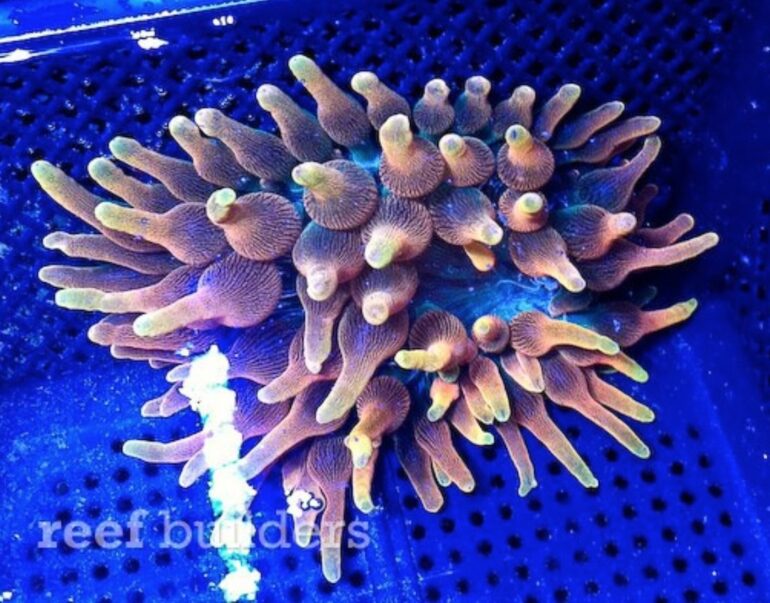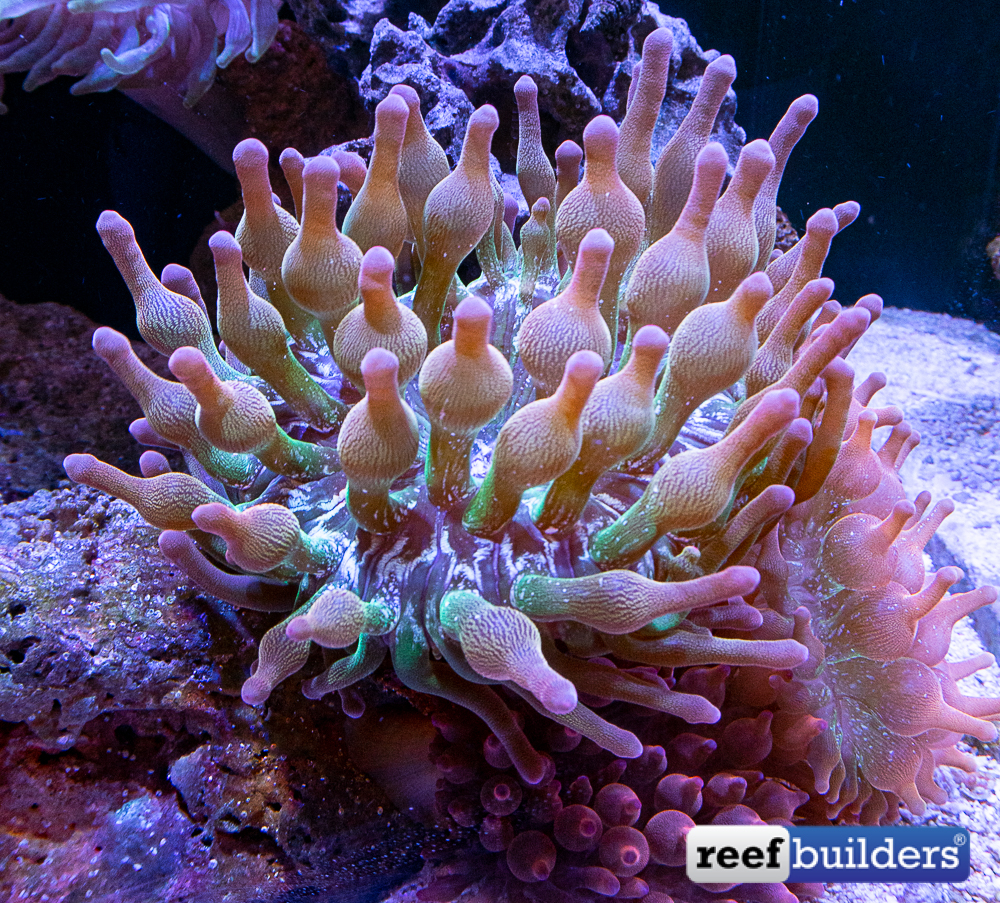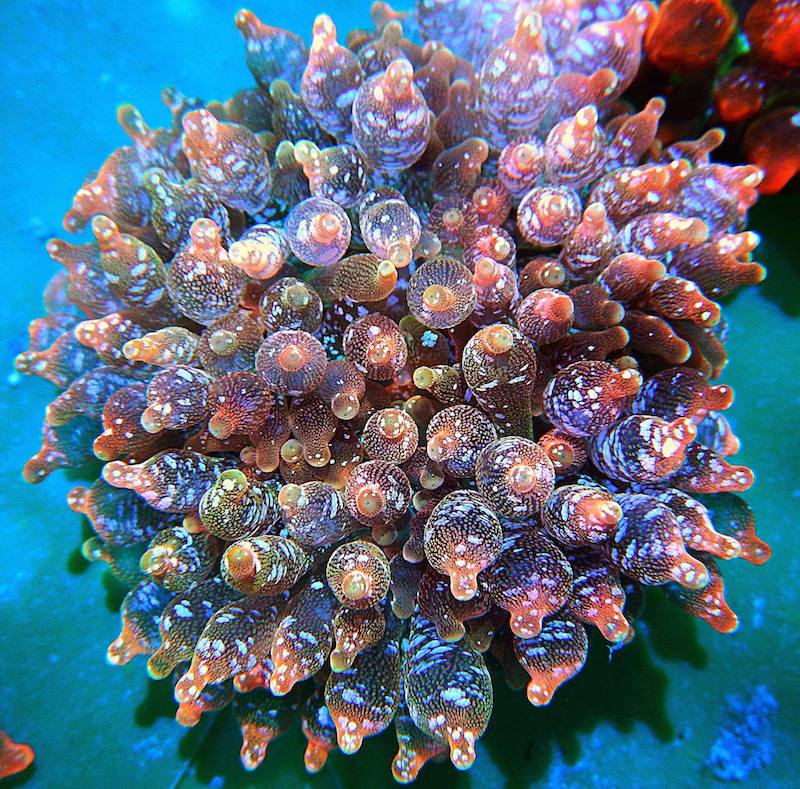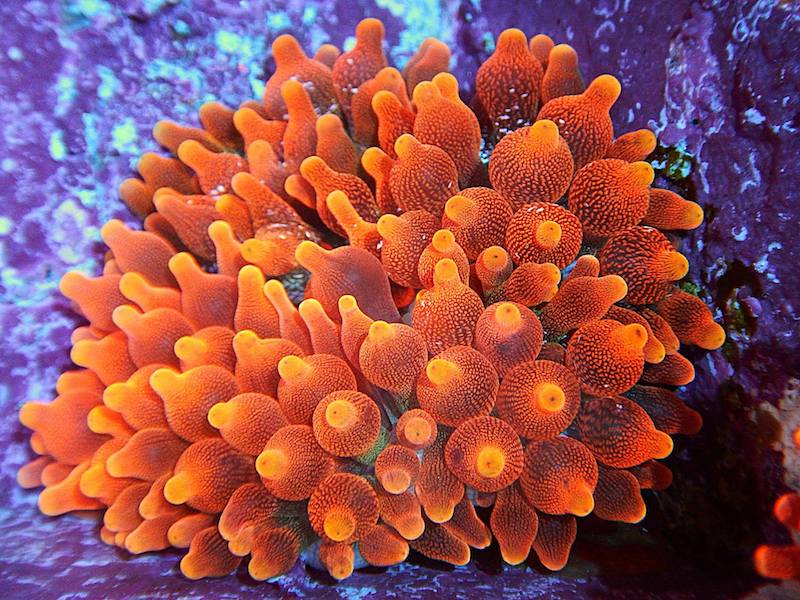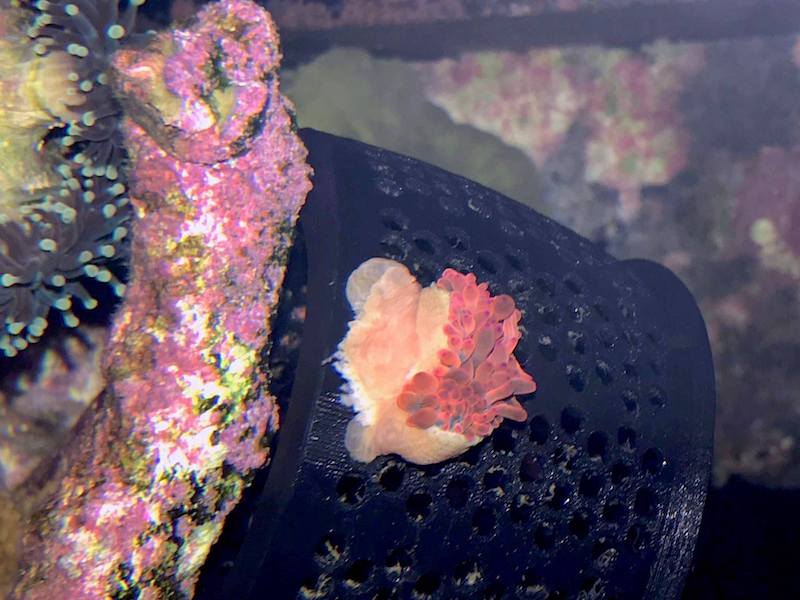Adding Bubble Tip Anemones
The various color morphs of the bubble-tip anemone (Entacmaea quadricolor) are mainstays in the marine aquarium hobby, and justifiably so. Not only are they genuinely gorgeous, but they’re also relatively easy to maintain as anemones go, don’t get excessively large, and are known to host a wide variety of clownfish species.
Owing to these many attributes, bubble-tip anemones, or BTAs as they’re known in hobby parlance, can exert a powerful allure over hobbyists looking to acquire a beautiful and interesting new specimen. However, it’s important to be aware that attempting to introduce a BTA to an already-stocked reef system can present some significant challenges.
The biggest sticking point is the propensity of these animals to wander around a tank until they find a location that suits them. As a specimen moves about, it can blunder into and sting corals and other sessile invertebrates in the process. Wandering can also expose the specimen to dangers such as pump and overflow intakes, which can suck in the anemone with deadly consequences.
Hence, it’s generally best to either give BTAs a dedicated tank or introduce them to a system first and let them settle into a preferred niche before adding other invertebrates. Pump and overflow intakes also need to be screened off in some way to protect the anemone.
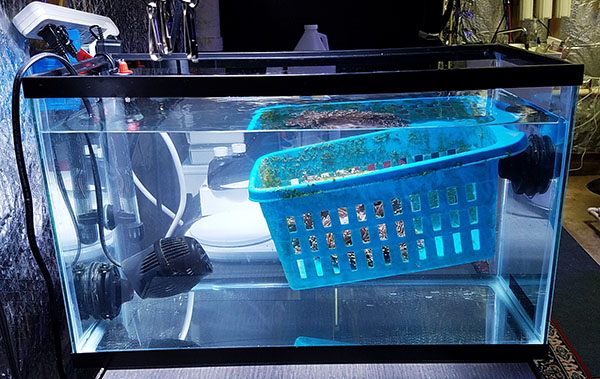
Is it possible to add a BTA to a stocked system without creating a compatibility crisis? The answer is a qualified “maybe.” The feasibility of adding a BTA to an established system depends on a variety of factors that influence not only whether the specimen will thrive, but also whether it will be inclined to move around or stay put. Here are some conditions that will increase the odds of a successful introduction:
Tips for Introducing Anemones
Pick a pre-attached specimen
This isn’t a deal-breaker, but if you can acquire a specimen that is already attached to a piece of live rock or another hard substrate, rather than one that is detached and drifting, you may have better luck curbing its “wanderlust” and getting it to remain where you place it initially.
Choose a roomy location with the right light and flow
Though modest in maximum size compared to some anemones, BTAs can still reach well over a foot in diameter—and they grow quickly. With proper conditions and care, don’t be surprised to see that two-inch-diameter specimen you buy at your local fish store triple or quadruple in size in just a handful of months. Simply put, a full-sized, fully expanded BTA needs plenty of space. The anemone’s niche in the tank must accommodate that growth potential, ideally with room to spare in the very likely event that the specimen will shift at least somewhat horizontally or vertically in search of the most advantageous position.
Of course, the location must also provide the appropriate illumination and flow characteristics for a BTA—that is, a high light level (keeping in mind that gradual acclimation to higher-intensity lighting may be necessary depending on the level of illumination it was maintained under before you acquired it) and medium, turbulent water flow.
Add anemones to a sparsely stocked tank
Obviously, the more available space between specimens in the system, the less likely a wandering BTA will come into conflict with other invertebrates. Also, if the BTA does choose to reposition itself and ends up encroaching on one of your corals, it may be necessary to move the coral elsewhere in the tank to prevent harm to either party. Of course, in that case, there must be another suitable location in the tank to move the coral to. So, your odds of a stress-free introduction will be much higher if the tank is sparsely stocked, leaving plenty of available real estate for displaced specimens.
On the other hand, attempting to “shoehorn” a BTA into a heavily stocked system that has only one remaining niche where the anemone would “just look perfect” is a recipe for disaster.
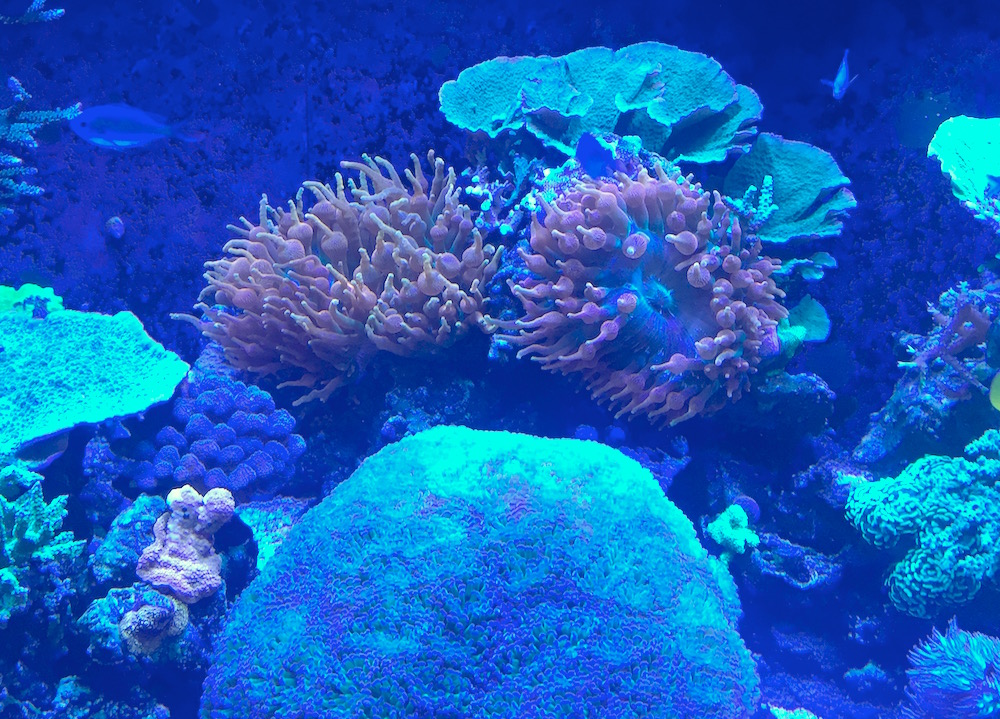
Appropriate feeding
BTAs are photosynthetic, but they benefit from regular feedings. Offer small portions of meaty seafood (e.g. shrimp, clam, mussels, krill, mysids, etc.) approximately once every three to four days. Chunks of food can be delivered to the tentacles with forceps or tongs, or you can gently squirt foods of smaller particle size into the tentacles using a turkey baster. To prevent the water current from dislodging food before the anemone can capture and consume it, it’s helpful to shut off your water pumps for several minutes at feeding time. You might also need to fend off a fish or two while the anemone engulfs the food item so it doesn’t get plucked it away.
Remember, encouraging the specimen to stay put is one of your primary goals when introducing a BTA to a stocked reef system, and if it’s getting all the nourishment and other resources it needs in a given location, it will be less likely to wander.
Excellent water conditions
Last, but certainly not least, while BTAs are fairly hardy, they still demand good water quality and stable parameters. Degraded water quality and/or fluctuating parameters will not only have an adverse impact on their health, but will also encourage them to wander in search of better conditions, so be sure to stay on top of those water changes and dose any additives appropriately and judiciously.



